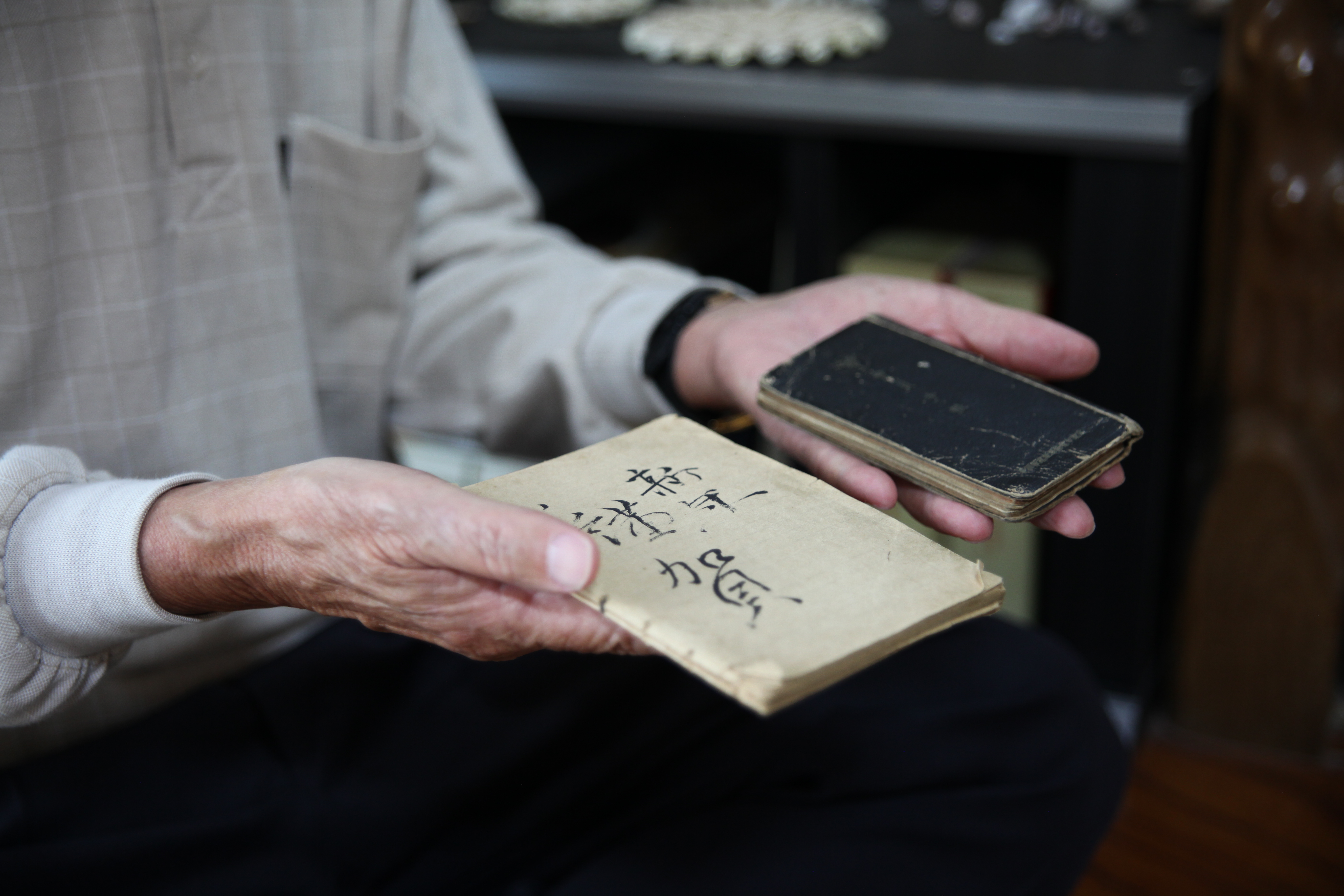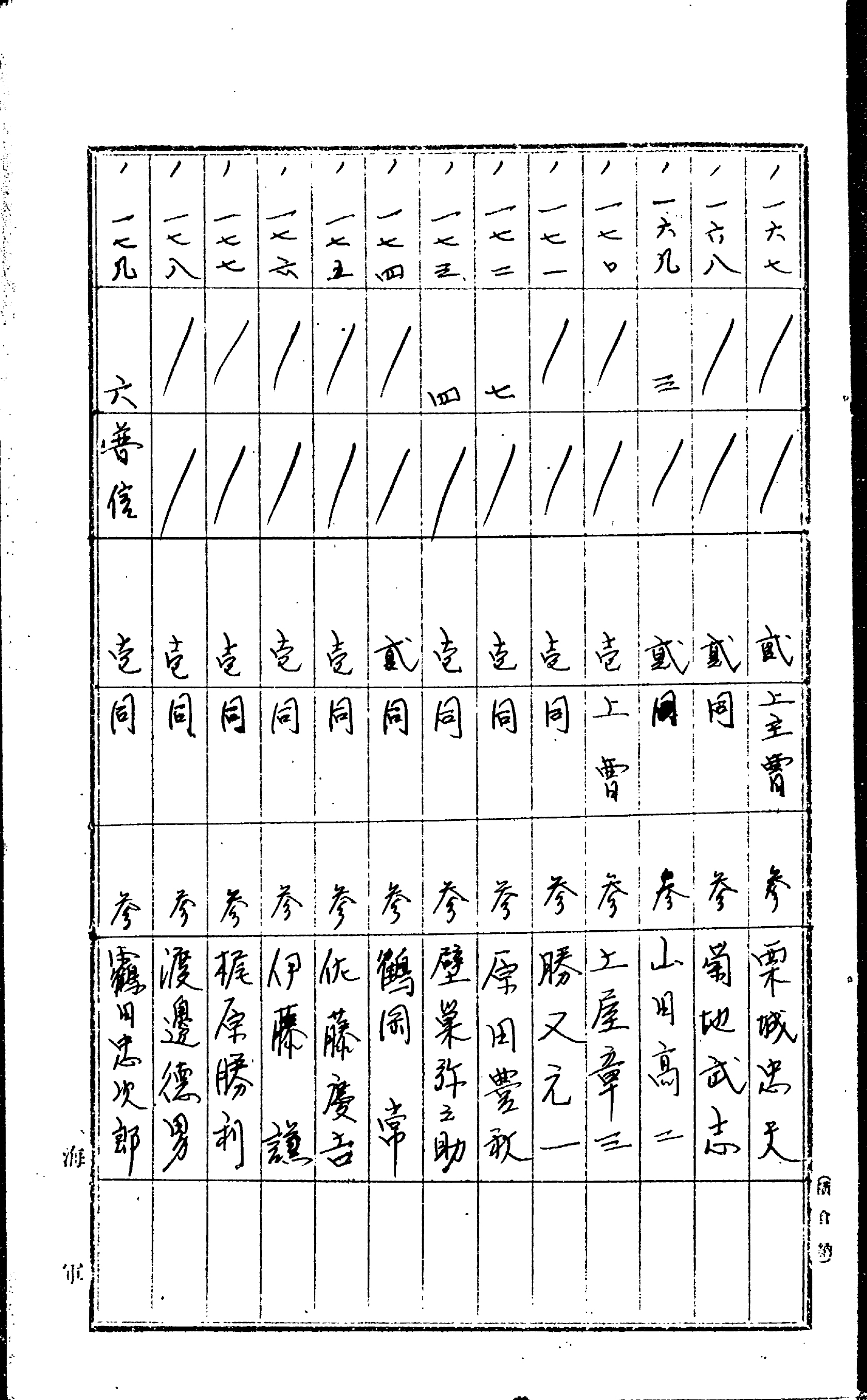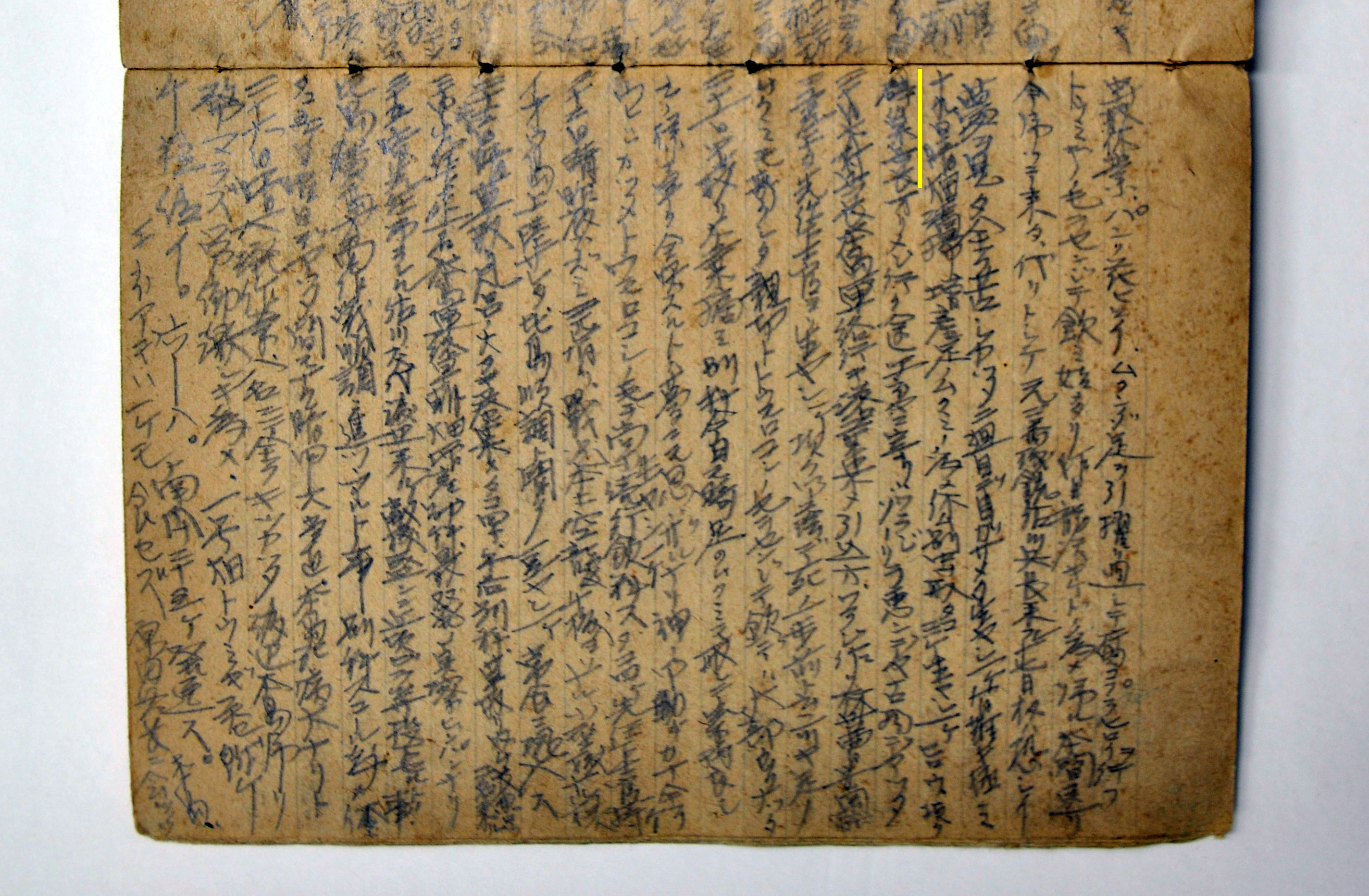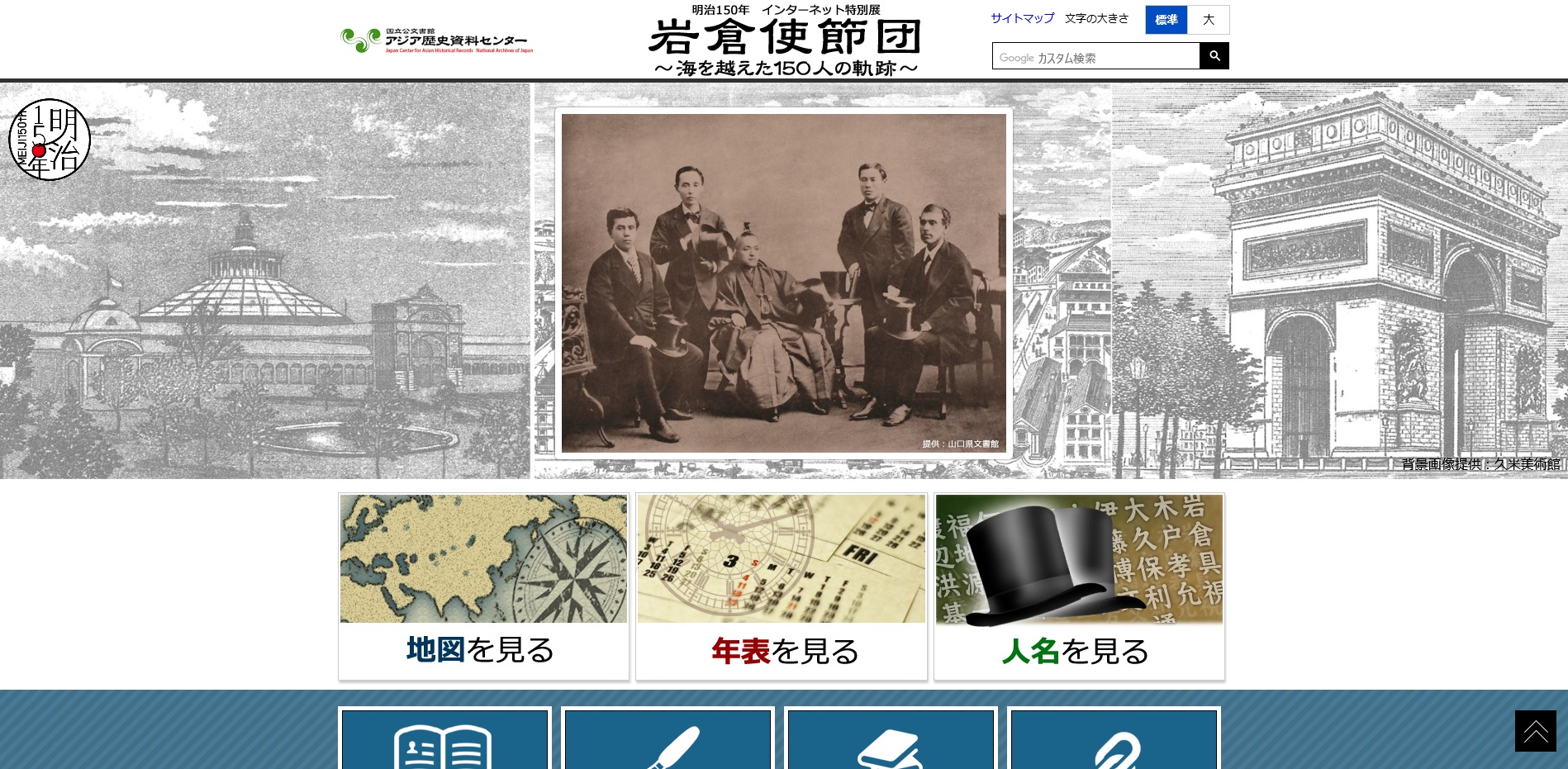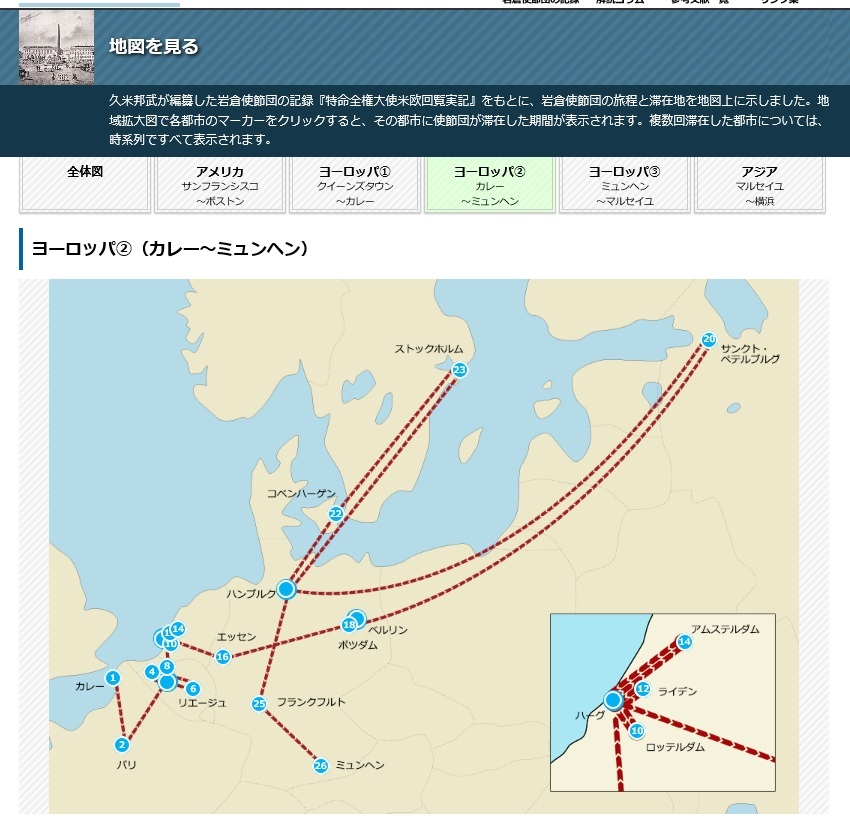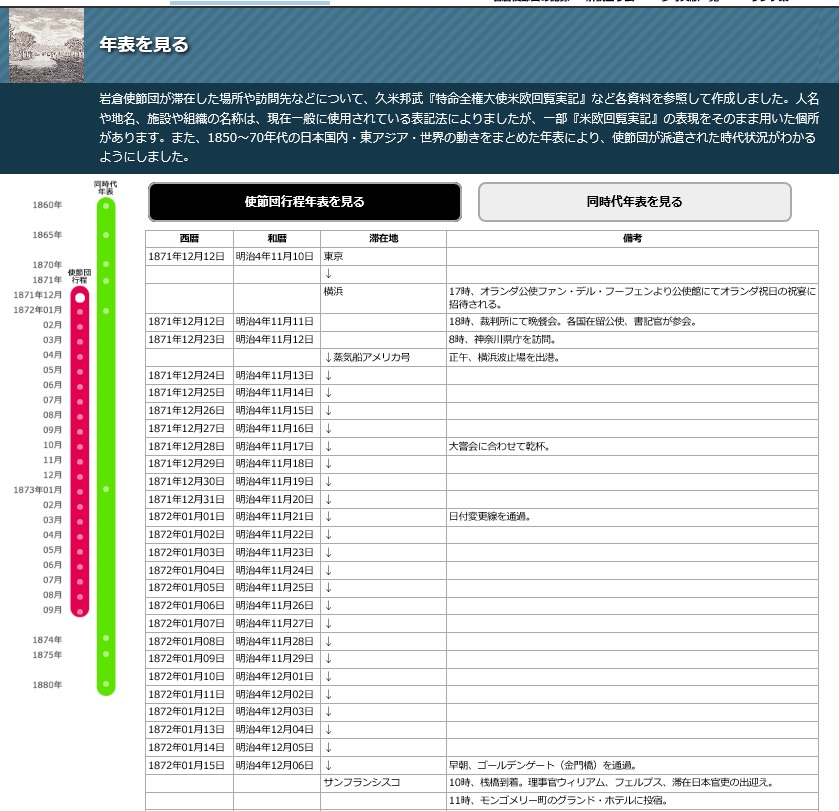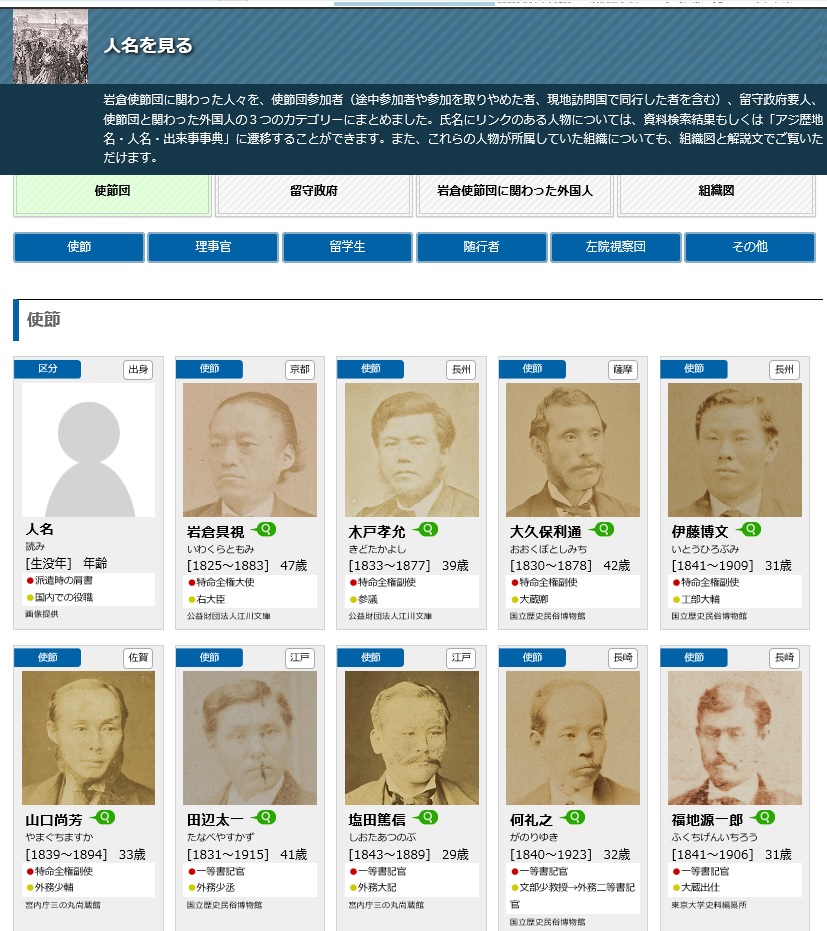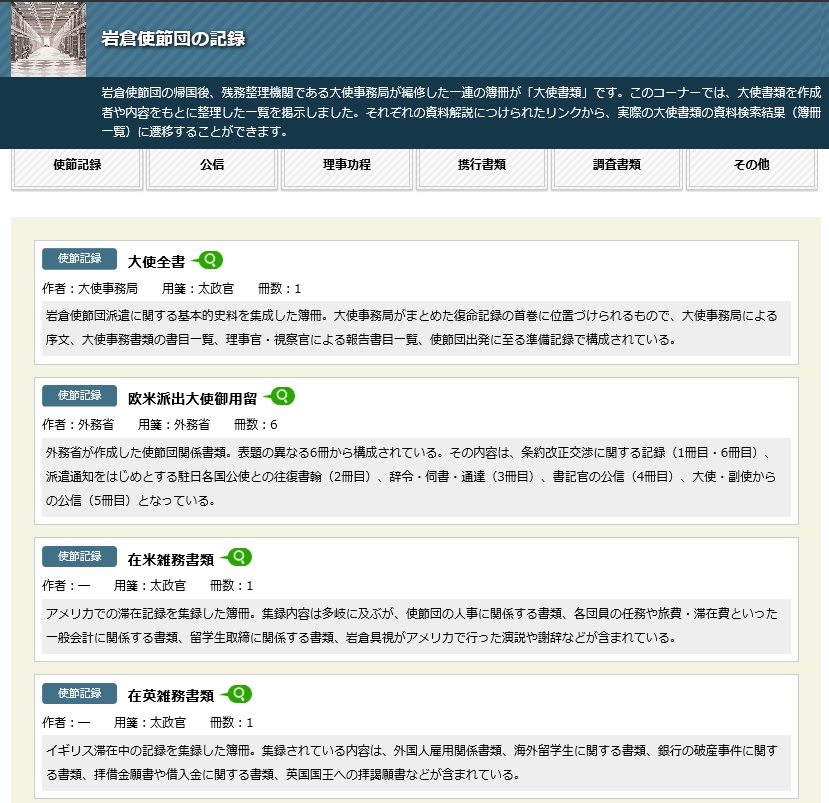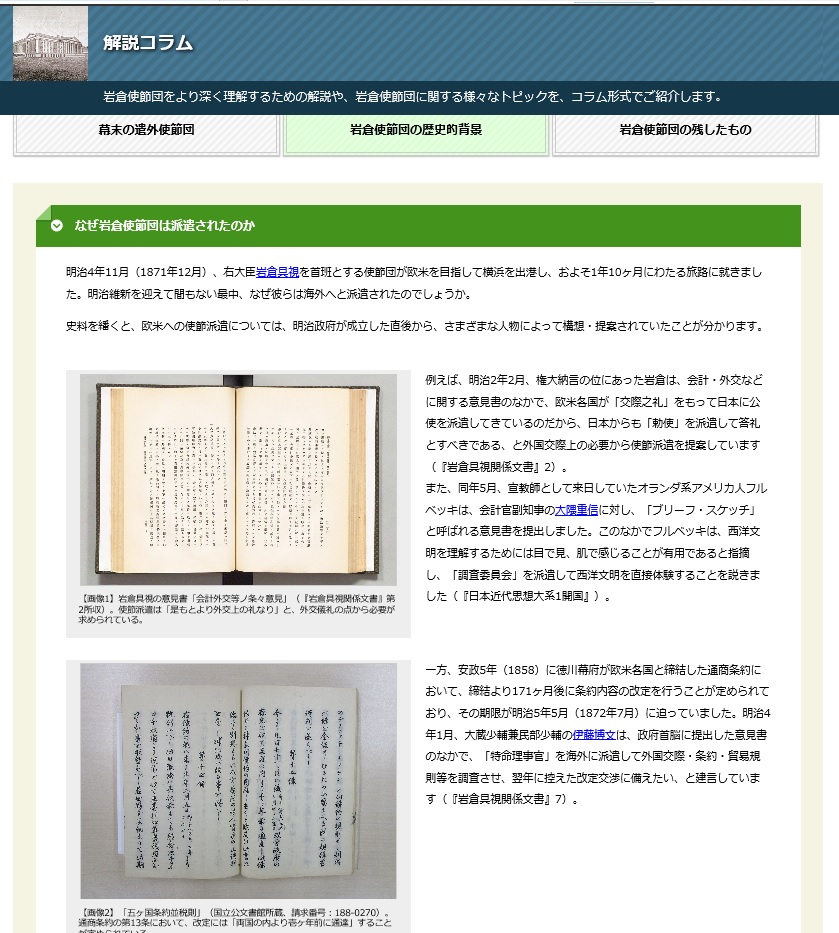

-Documents released on August 24, 2018
-Documents released on October 12, 2018
-Documents released on November 5, 2018
-Documents released on December 7, 2018
2. Notice from Diplomatic Archives of the Ministry of Foreign Affairs of Japan
3. Documents Spotlight
-Reading the Diary of Satō Tomigorō: A Journey Back over Seven Decades
(Ōkawa Shiori, Assistant Resesarcher, JACAR)
4. Introduction of New Contents
-Meiji Restoration at 150 Years, a 2018 Special Internet Exhibition
5. Outreach Activities
6. Event Informations on the Related Organs
-National Archives of Japan / Diplomatic Archives of the Ministry of Foreign Affairs of Japan
・Records on Ratification of Decorations, Showa 21 (1946) to Showa 29 (1954)
The decoration system was established by the Council of State Decree No. 54 (1875). Ratification records and other related documents are compiled by year and date. Includes honors and decorations bestowed on foreigners. On this occasion, JACAR has made available records covering the period from 1946 to 1954.
Cabinet > Jokun Saika Sho : Records on Ratification of Decorations > Showa > Showa 21(1946)
Cabinet > Jokun Saika Sho : Records on Ratification of Decorations > Showa > Showa 22(1947)
Cabinet > Jokun Saika Sho : Records on Ratification of Decorations > Showa > Showa 23(1948)
Cabinet > Jokun Saika Sho : Records on Ratification of Decorations > Showa > Showa 24(1949)
Cabinet > Jokun Saika Sho : Records on Ratification of Decorations > Showa > Showa 25(1950)
Cabinet > Jokun Saika Sho : Records on Ratification of Decorations > Showa > Showa 26(1951)
Cabinet > Jokun Saika Sho : Records on Ratification of Decorations > Showa > Showa 27(1952)
Cabinet > Jokun Saika Sho : Records on Ratification of Decorations > Showa > Showa 28(1953)
Cabinet > Jokun Saika Sho : Records on Ratification of Decorations > Showa > Showa 29(1954)
Postwar Diplomatic Records > Series A’ Politics, Diplomacy and International Dispute
We released 108 files pertaining to postwar issues, including "Documents relating to Acceptance of Potsdam Declaration", "Documents relating to Allied Powers’ Occupation Policy and Military Administration", "Documents relating to Liaison Conference on Public Relations", "Board Meeting Minutes of Central Liaison and Coordinating Office", "Minutes of Inter-ministry Committee of Central Liaison Office", and "Official Reports / Central Liaison Office".
We released items pertaining to Korea, China, and the Soviet Union in "Documents of Japan’s Foreign Policy Research / Policies toward Asia", "Documents of Japan’s Foreign Policy Research / Related to Foreign Affairs Council", "Bi-weekly Reports on Matters Related to the Several Nations’ Policies toward Japan".
We released files on the diplomatic relations between Japan and Nepal, Indonesia, Cambodia, Laos and Vietnam.
We released files on the diplomatic relations between Japan and the UK as well as British Commonwealth countries (Sri Lanka, Pakistan, Australia, India, New Zealand).
We released files on the diplomatic relations between Japan, France, and French Indochina.
We released the file pertaining to "International Communism and Activities / Related to Communist International and Communist Information Bureau ".
We released files pertaining to "Documents on the Constitution of Japan / Research Materials" and "Miscellanea on Conditions of Former Japanese Overseas Territories”, Volume 1.
We released 5 volumes of files pertaining to "Documents on the Korean War".
We released materials pertaining to "Documents Related to World War II / U.S., U.K., French, Soviet and Other Countries’ Foreign Minister Meetings on Postwar Reconstruction Issues ".
・Ministry of Commerce and Industries > Economic Stabilization Board
Records concerning the Economic Stablization Board are materials which were stocked at the Library of the Economic Planning Agency.
・Ministry of Finance > Ministry of Finance > Records of the Financial History from Meiji to Taisho era > Records from the Shoda Family
Records on financial administration such as taxation, currency, and Nishihara Loans (yen loans to China provided by the Terauchi Cabinet during 1917 and 1918). Also included are prewar diaries and letters of Shoda Kazue (1869-1948), who served as Minister of Finance among other posts.
The materials compiled into the first eight volumes of "Showa Zaiseishi Shiryo (Records of the Financial History of the Showa Period)" were created or received by bureaus and departments in the Ministry of Finance during the time after the Great Kanto earthquake of 1923 and before 1938. There are eight volumes according to the time of collection, and classified in 38 categories. JACAR on this occasion is releasing Volume 9, adding to the already-released Volumes 1 through 8. Volume 9 comprises materials collected from 1926 until the end of the World War II, according to the same classifications as that for the previous volumes.
Diplomatic Archives of the Ministry of Foreign Affairs of Japan has launched a web search system for diplomatic historical records. The system can be used without a user account. You can browse images of “the Sovereign Letters and personal letters from heads of states” in pre-war period and also access other catalog information(partly pre-war and post-war records) of JACAR.
https://www.da.mofa.go.jp (Japanese)
Usage guidance
https://www.mofa.go.jp/mofaj/ms/da/page25_001744.html (Japanese)
How to use the system
https://www.da.mofa.go.jp/help/help.html (Japanese)
Tsutomu’s father Tomigorō was drafted in April 1943 as part of a general call-up when signs of Japan’s eventual defeat were already apparent. He shipped out from Yokosuka that July. He was stationed on Wotje Atoll in the Marshalls, which was defended by the 64th Guard Force of the Imperial Japanese Navy (IJN).
The notebooks were delivered to Satō’s family some years after the war. We know from the letter enclosed with the notebooks that they were sent by a Mr. Harada who lived in Yamanashi Prefecture. However, the envelope on which his full name and address have gone missing, and so it was not possible to determine what became of him.
In his letter, Harada wrote that Tomigorō and he were “comrades-in-arms” among seamen “of the same year.” Given that Harada would now be 112 years old if he were born in 1906 as Tomigorō was, I proceeded with searching for materials to help me in my deciphering efforts aware that I probably wouldn’t even be able to find any traces of Harada.
The unit to which Tomigorō had been assigned was the IJN’s 64th Guard Force. An internet search using that string as a search term turned up a document in JACAR’s database, “Filed copies of wage notifications for survivor”.
Under conditions that resulted from repeated air attacks that made it likely even still having a pen and paper was rare thing, the spectacle of paymaster Lieutenant Kitajima Hidejirō (Correct reading of personal name is unclear.-Tr.) having written down the names of each and every soldier who was still alive stands out. Doubtless the faces of his fallen comrades-in-arms came to mind during the interminable wait for the ship that would take survivors home.
Two people with the surname “Harada” appear on the roster of names. Given that Harada described Tomigorō his “comrade-in-arms” in his letter, it may be assumed that Harada and Tomigorō were attached to the same unit. This led me to believe that the diary had probably been sent by one of these two Haradas.
The name “Harada Toyoaki” appears in the 6th column from the right, and “Kabesu Yanosuke” appears immediately to the left in the 7th column.
Turning our attention to the numbers of dependents listed in the passbook, we see that the space in the column for Harada Bunzō (Correct reading of personal name is unclear.-Tr.) has been left blank, while “7” appears in the column for Harada Toyoaki. If we surmise that letter-writer Harada who had a wife and children therefore had dependents, then the possibility is quite high that he was Harada Toyoaki. I then learned from records held by the Ministry of Defense that Harada Toyoaki was from Yamanashi Prefecture and that he was born in 1906 just like Tomigorō. This made it clear that the comrade-in-arms of the same year who sent the letter from Yamanashi was Harada Toyoaki.
The diary was written mainly in pencil and pen. Due the paper having deterioration from exposure to the elements, there are numerous places in which the writing was difficult to decipher with the naked eye. There also are places where a passage’s meaning does not come across when transcribing the characters the way they appear. In those case, I went ahead with my deciphering work bearing in mind the context of the preceding and following material along and Tomigorō’s writing tics.
19th. Clear skies.
I take a break from cleaning fields and planting more because my legs are swollen.
From the scavengers I get three screwpine fruits and a coconut.
Leading Seaman X-su stops at Enea on his way to Wormej.
I gave him some straw sandals. They were old.
No matter how much I looked at it, in the end I was not able to decipher the character represented by the “X” in the name above. If I stare at it long enough, it appears to be the character“辟” (read as heki). Given that the it is followed by “巣” (read as su) and then two characters that indicate the rank of “leading seaman,” I surmised that “辟巣” was a person’s name.
If we wanted to be certain of what this name is, we might turn once again to the “Filed copies of wage notifications for survivor” passbook used to determine the identity of comrade-in-arms Harada. This time, I ran my eyes over the list to see if there was someone who had a last name that resembled “辟巣”.
Stranglely enough, doing so I found just to the right of Harada Toyoaki an entry for someone named “壁巣”(read as Kabesu).
The heki element in his surname is a character that has “辟” on top and a second element on the bottom, “土.” I looked at the source material again. There was no “土” below the “辟.”
As I read through the text that Tomigorō had produced since receiving his call-up in 1943, I noticed he developed a tendency in his writing to abbreviate the way he wrote characters—abridging radicals and other components. If we presume that the “土” element on the bottom was abrided leaving only the “辟,” then we can imagine the scene 73 years ago February 19 was one of Kabesu Yanosuke coming up to Tomigorō as the latter visited Enea Island and Tomigorō giving him an old paper of straw sandals.
3. The Record of a Sea Voyage
Aside from considering people’s names, using the documents I was also able to trace back the journey Tomigorō took from Japan to Wotje Atoll. From the jottings in his diary, I saw that he departed from Yokosuka on July 9, 1943, and took three different vessels to eventually reach the Marshalls and Wotje Atoll that August 1. The day before his arrival in Wotje, the vessel stopped along the way after setting out from Kwajalein Atoll to fish for bonito. We can infer from this that the third vessel was likely a small craft such as a fishing boat, but we do not know its name from his diary.
Many units produced wartime logbooks. According to the logbook of the IJN’s 64th Guard Force for July 1943 along with other military historical resources, the former fishing boat Dai-go Aitaka-maru departed Kwajalein on July 31 and the following day took on 80 or so personnel who it delivered to Wotje Atoll. In such ways, I was able to track down unit details not recorded in the diary by working through multiple resources.
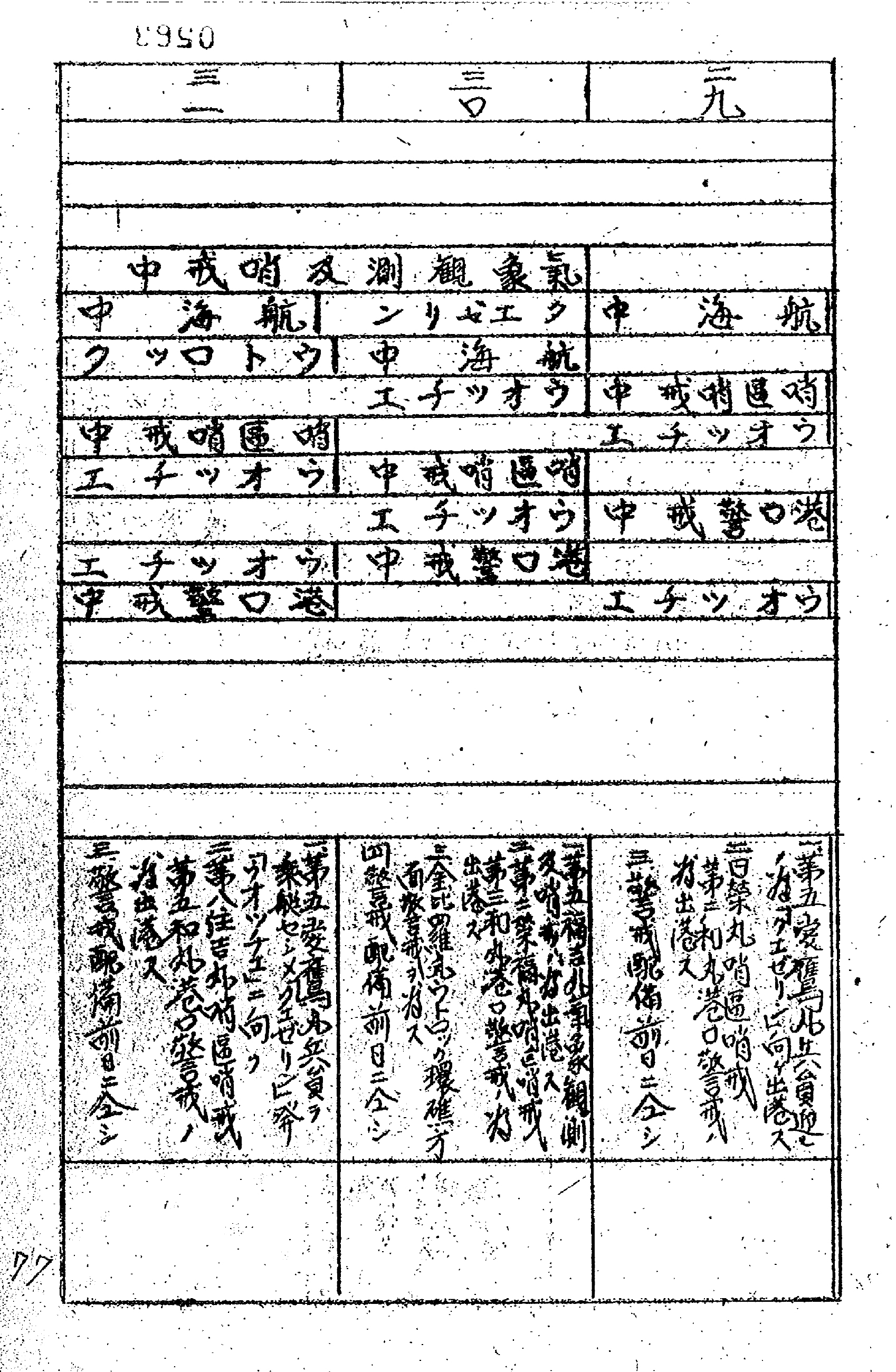
Wartime log book from November 1, 1942 to November 30, 1943, 64th Guard (4)(Ref.C08030497100, image 41)
In spring 2016, together with Satō Tsutomu I visited Wotje Atoll where his father met his fate. The scars of war still remain in some places here despite more than 70 years having gone by since the time when Tomigorō wrote his diary, chatted with his comrades-in-arms, and worked assiduously to produce more food. Through those mouldering war ruins I was able to get a mental image of the scene however slightly as Tomigorō saw it in his time, but it was difficult to imagine what the days spent fighting starvation must have been like.
When you peruse Tomigorō’s diary after the war, you are struck by how he scrupulously noted day by day the various ailments such as edemas, hunger pains, and diarrhea that emerged as war conditions worsened. The image arises of him as he confronts his own death. The weakening of his physical strength and willpower as his time drew near is vividly conveyed by his penmanship as his writing grows extremely chaotic.
Finally, there is the message that Tomigorō―who chose to continue writing until just before his life gave out, and who asked his comrade Harada Toyoaki that his two pocket notebooks be sent to his family―left behind. It was his hopes for his family: the farewell note he wrote that he glossed with notations showing how to read certain Chinese characters so his children could read them. Wishes that would left out of public records. The fact that he died not in battle but rather from starvation is clear from the traces of another sentence that was written twice in slanted characters in a way that made them stand out: “Dead, no food.”
“Be healthy and cheerful. Eat good things, too, and get by with your lives.” It was with those words that Tomigorō bid his farewell 70 years ago. I wonder if we are living in the future he hoped for. Hearing his quiet voice as I peruse public documents as the Heisei era draws to a close, I am still cannot say if this is achievable now or even in the future.
Nihei Yoshiaki. “Satō Tomigorō ittō heisō no isho, senjō nikki [The farewell note and combat diary of Petty Officer 1st Class Satō Tomigorō]”. Hakuō Daigaku ronshū [Hakuoh University collected theses] 25, no. 1 (2010).
Ōkawa Shiori, ed. Mārsharu, chichi no senjō: Aru Nihon hei no nikki o meguru rekishi jissen [The Marshall Islands, My Father's Battlefield: A journey of historical practice around a Japanese soldier's diary]. Tokyo: Mizuki shorin, 2018.
This special exhibition focuses on the Iwakura Mission that was dispatched at the start of the Meiji era. We introduce the Iwakura Mission’s historical background and activities along with maps, chronological tables, and writing about them. It is also possible to search records left by members of the Iwakura Mission and associates.
understanding of the Iwakura Mission.
-Domestic
|
July 7
|
Held presentation at The Japanese Society for the History of Chemistry in Tokyo.
|
|
July 8
|
Held presentation at Association for Studies of Chinese Society and Culture in Tokyo.
|
|
Octorbar 26 - 28
|
Held presentation at EACJS in Kyoto.
|
|
Octorber 30 - November 1
|
Held booth exhibition at the 19th Library Fair & Forum in Yokohama.
|
|
November 17
|
Held presentation at Japanese Association for Contemporary Historical Studies in Tokyo.
|
|
July 5 - 7
|
Held booth exhibition at AAS in Asia in New Delhi.
|
|
September 12 - 15
|
Held presentation at EAJRS in Kaunas.
|
|
Octorber 15 - 16
|
Held presentation at International Academic Conference of the Institutes for Research and Editing of East Asian Historical Resources in Beijing.
|
|
November 30
|
Ms. Elaine NG (National Library Board Singapore, CEO), Ms. Abigail HUANG (National Archives of Singapore, Archivist)
|
|
December 12
|
Ms. Kaoru Ueda(Stanford University, Hoover Institution, Curator of the Japanese Diaspora Collection)
|
|
December 13
|
Mr. Kiyohito Hamada(National Museum of Nature and Science Japan, Chief of External Activity Promotion Division)etc.
|
|
Period
|
Event
|
About
|
Link
|
|
From January 26, 2019 to March 9, 2019
|
Event Name: 2018 4th Featured Exhibition “Edo Hot Springs”
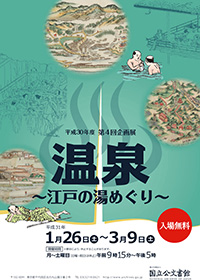 →Leaflet(PDF:2.2MB) |
Japanese have long been familiar with the medicinal effect of hot spring bathing. During the Edo period, information on hot springs spread through “Meisho Zue (sightseeing guides)” and travelogues, making them popular destinations. While hot springs were initially valued for their healing properties, they gradually became resort spas. This exhibition introduces the relationship between people and hot springs through historical materials mostly from the Edo period.
|
|
|
Period
|
Event
|
About
|
Link
|
|
From October 23, 2018, to February 28, 2019
|
Event Name: Planned Exhibition “A Travel for Mysteries of Japan’s Diplomatic Records”
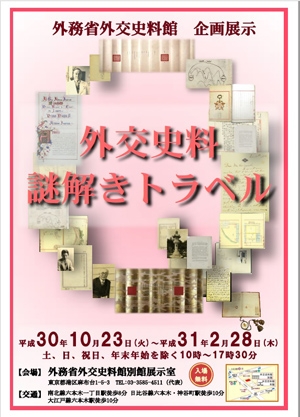 |
The Diplomatic Archives of the Ministry of Foreign Affairs of Japan receives many questions from home and abroad about the materials in its collection.
Choosing eight out of those questions, this exhibition introduces a variety of aspects of Japan’s diplomatic history, together with original documents.
Please enjoy the time travel to see the diplomatic records and solve the mysteries.
|
|
[Postscript]
Thank you for reading the JACAR Newsletter No.27, and we hope you enjoyed it..
Leaflets about JACAR are available in English, Japanese, Chinese, and Korean, so if you would like copies, please contact us.
An email about the JACAR Newsletter has been sent to everyone who requested a copy as well as those who have exchanged business cards with JACAR staff members. If you do not wish to receive future e-mails, please let us know.
[Reference] TEL : +81-(0)3-5805-8801 E-MAIL : jacar_enquire@archives.go.jp



